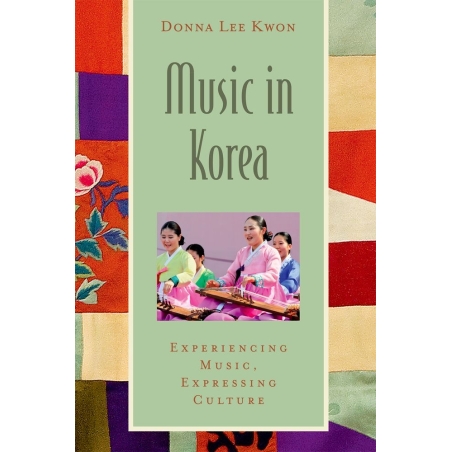Based on author Donna Lee Kwon's extensive fieldwork, the text features interviews with performers, eyewitness accounts of performances, and vivid illustrations. Kwon uses three themes--Korea as a transnational player in East Asia, the intersection of Korean music and cultural politics, and Korea's maintenance of its strong cultural identity through both musical and aesthetic continuity--to survey the region and draw parallels and contrasts between its various traditions. Each theme lends itself to a discussion of Korea's classical musical customs and its contemporary developments. Packaged with an 80-minute audio CD containing musical examples, the text features numerous listening activities that engage students with the music. The companion website (www.oup.com/us/globalmusic) includes supplementary materials for instructors.
CONTENTS
Foreword
Preface
CD Track List
1. KOREA FROM BOTH SIDES OF THE BORDER
Pyongyang, North Korea
Kosong, South Korea
Intersecting Themes
Transnationalism in Flux: From the Hermit Kingdom to the Korean Wave: From the Hermit Kingdom to the Korean Wave
Modernization and Cultural Continuity in North and South Korea
Music and Cultural Politics: Articulating the Border through Song
Our Wish is Reunification: The Story of Im Su-kyong:
Popular Visions of Reunification:
2. THE COURT AS CULTURAL CONDUIT
Court Music, Cultural Policy, and the State
The Movement of Court Culture from East to West
The Development of Ritual Music of the Court: Music, Cultural Politics, and the State
Court Music in Practice Today
Experiencing State Sacrificial Music
Ritual Order and Cosmology
Instruments and Music
Munmyo Cheryeak:
Chongmyo Cheryeak:
Tension and Release in Sujech'on
3. THE POLITICS OF PRESERVATION AND REVIVAL IN INSTRUMENTAL MUSIC
Instrumental Preservation, Adaptation, and Revival
South Korea: The Politics of Preservation and Revival
North Korea: Music and the Masses
Solo Repertoires
Sanjo
The Development of Sanjo and its Spread to other Instruments:
Changdan: The Rhythmic Underpinning of Sanjo:
The Interaction of Rhythm, Mode, and Melody in Sanjo:
Ensemble Forms
P'ungmul
P'ungmul in the Village Madang:
P'ungmul in the Streets: Political Protest Marches:
P'ungmul on Stage: The Emergence of Samul Nori:
Shamanist Ritual Forms
Chindo Ssikkim-kut (Cleansing Rituals):
Sinawi and the Cultivation of Improvisation:
4. THE SINGING VOICE
Folksongs
Central (Kyonggi) minyo
Southern (Namdo) minyo
Sijo-ch'ang: Cultivating an Appreciation for Sung Poetry
Text, Rhythm, and Melody
P'ansori: Intertextuality and Cultural Continuity
History and Development Through Multiple Formats
Performance and Repertoire
Warm-up Songs (Tan'ga):
Narrative Performance: The Song of Ch'unhyang:
Expressive Elements of P'ansori
P'ansori Aesthetics
Contemporary Developments in Korean Musical Theater and Film
North Korean Revolutionary Opera
P'ansori and Film: Director Im Kwon-taek
Sop'yonje:
Ch'unhyang:
5. COLONIAL LEGACIES IN KOREA
The Legacy of the Japanese Colonial Occupation (1910-1945)
The Enduring Popularity of Trot
The Emergence of Sin minyo
Engaging with Western Concert Music
South Korea: Tradition, Innovation, Synthesis, and Popularization
North Korea: Music, Synthesis, and Politics
Western Music and Modern Nationhood: The Making of Korea's National Anthems
6. NEGOTIATING TRANSNATIONAL FLOWS OF CULTURE
Shifts in the Global Mediascape
The Korean Wave
K-Pop and the Influence of Seo Taiji and the Boys
Music and Power
The Presence of American Forces and the Dawn of a New Era in South Korean Pop
State-sanctioned Popular Music in North Korea
The Politicization of Popular Music in South Korea: T'ong kit'a and the Song Movement
Cultural Continuity in Korean Popular Music: Indexing Tradition in Korean Hip-Hop
Moving Beyond Tradition in the Music of Jang Goon
Glossary
References
Resources
Index




